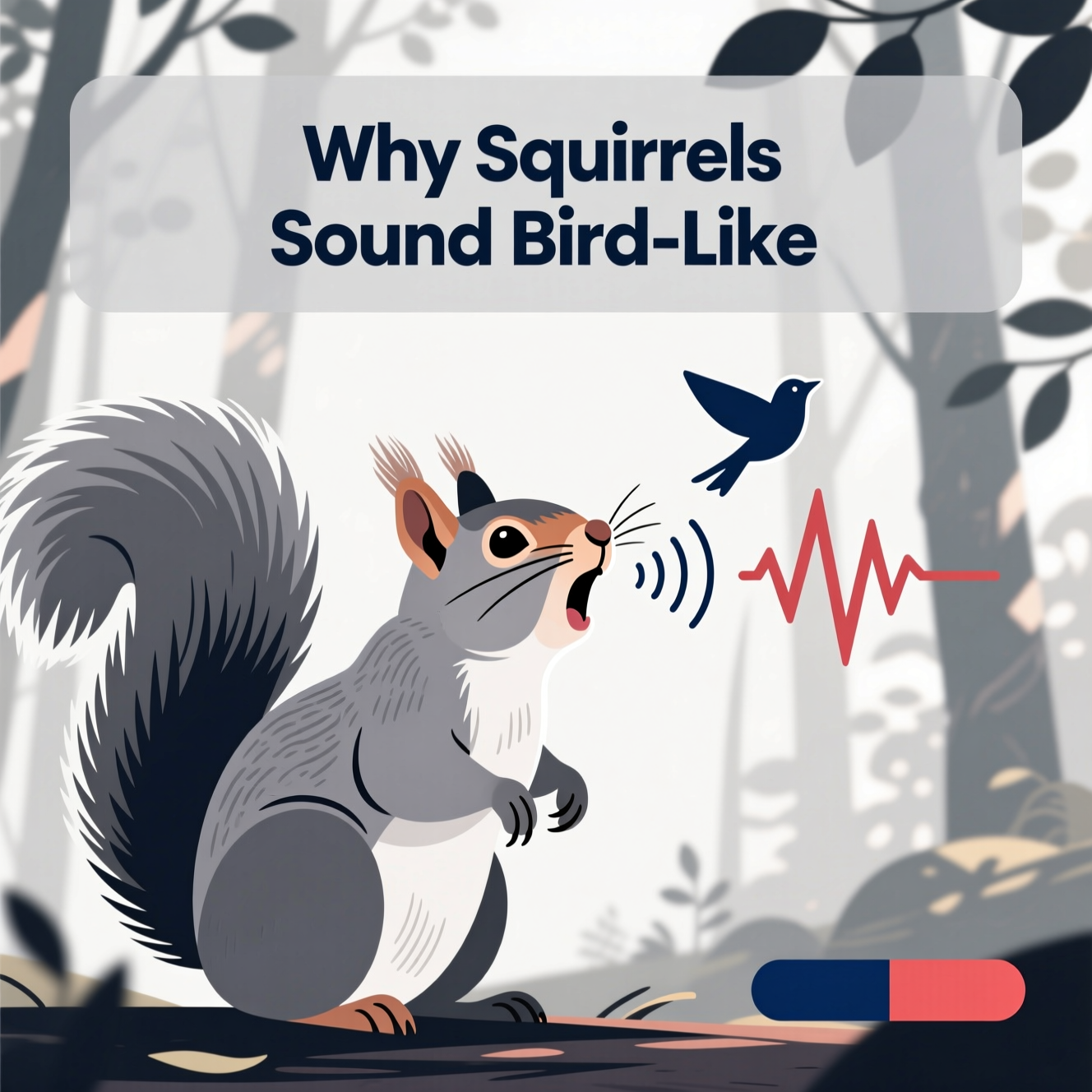Why Would a Grey Squirrel Make Loud, Bird-Like Sounds?
Grey squirrels sometimes emit loud, bird-like sounds, often described as scolding or rapid chattering. This behavior stems from their need for effective territorial defense and predator alerts. These specific alarm calls are a vital part of their vocal repertoire, designed to signal immediate danger to other squirrels and even birds.
Squirrel sounds can be surprisingly complex. Studies indicate that squirrel alarm calls can vary significantly in frequency and duration depending on the perceived threat, with some calls reaching frequencies of 10 kHz or higher. This demonstrates their sophisticated communication abilities, using these grey squirrel noises to warn of approaching predators and maintain their territory effectively.
In practical terms, a bird-like squirrel call is usually a sign of agitation or alarm. This vocalization serves to draw attention to a potential threat, ensuring nearby squirrels are aware. The effectiveness of these why squirrels make noise behaviors highlights their adaptive communication strategies.
What Does it Mean When a Squirrel Appears Distressed and Noisy?
A distressed squirrel often emits loud, repetitive vocalizations as a strong signal of immediate danger. This noisy squirrel behavior indicates intense discomfort, possibly from injury or entrapment. These distress signals serve to alert others and potentially deter threats.
Research on mammalian alarm calls suggests louder, more persistent vocalizations correlate with higher perceived threat levels. For most gardeners, understanding these squirrel fear sounds is key to predator awareness. This behavior can also stem from a territorial dispute or juvenile calls for assistance.
In practical terms, a panicked squirrel’s sounds are a cry for help or a warning. This vulnerability drives their urgency to communicate danger, enhancing community predator awareness.
Could This ‘Bird-Like’ Sound Be a Squirrel’s Warning to Other Squirrels?
Yes, a loud, bird-like sound is very likely a squirrel’s warning call. Squirrels communicate to alert their social group about dangers. These vocalizations serve as an urgent social alert for threats like predators or territorial encroachment. This animal communication is vital for survival.
These alarm chirps are more than just simple sounds. They can signal the presence of hawks, cats, dogs, or humans. Interspecies communication is a fascinating aspect of these calls. Studies show these calls can alert other wildlife, not just fellow squirrels. This demonstrates a broad ecological role for squirrel predator alerts. Squirrels use these vocalizations to regulate their environment.
Are Squirrels Trying to Communicate with Humans When They Make These Noises?
While squirrels don’t ‘talk’ to humans conversationally, their vocalizations can convey emotions. A sustained, loud noise may signal agitation or a perceived threat from your presence. This is their way of expressing distress or warning you to keep distance. Understanding this animal-human interaction is key.
These sounds often represent learned behavior or appeasement gestures. Observational studies suggest squirrels can distinguish individuals and adjust their reactions. This implies a complex form of interspecies interaction beyond simple instinct. They might be signaling a perceived threat to you or themselves, prompting a change in your approach.
What Specific Threats Might Cause a Squirrel to Make Such Loud Vocalizations?
Squirrels emit loud vocalizations when facing significant threats or agitation. Common triggers include the presence of avian predators, such as hawks and owls, or terrestrial predators like cats and foxes. Squirrels also vocalize due to territorial rivals encroaching on their space. A squirrel experiencing entrapment or injury, like being on an electric wire, will signal distress loudly.
Furthermore, sudden, loud noises from humans or machinery can provoke alarm responses. The intensity of the sound often correlates with the perceived danger. Recent studies suggest the specific type of alarm call can differ based on whether the threat is aerial or terrestrial, providing distinct warnings to other squirrels. This communication is vital for their survival.
In practical terms, these vocalizations serve as an alert system for the squirrel community. They warn others of immediate danger, aiding in collective evasion. Environmental stress, even minor disturbances, can sometimes lead to heightened vocal activity as squirrels assess their surroundings for potential risks. These calls are a key part of their behavioral repertoire.
How Long Should I Expect a Squirrel to Make Distress Noises?
Squirrels emit distress vocalizations when facing perceived threats. The duration of these loud noises can vary significantly. Typically, they may last from a few minutes to an hour. This depends heavily on environmental factors and the squirrel’s assessment of danger.
The animal’s stress response is directly linked to vocalization length. Prolonged stress in wild animals can lead to physiological changes. Sustained vocalizations indicate ongoing distress. They often cease abruptly once the situation is resolved or the perceived threat is gone.
What Should I Do if I Observe a Squirrel Making Loud, Distressed Noises?
When you hear a squirrel vocalizing loudly and appearing distressed, the first step is careful observation from a distance. Avoid approaching or startling the animal further; this can escalate stress and potentially lead to injury. Your initial reaction should prioritize non-interference. For most backyard wildlife safety situations, observing the squirrel’s immediate surroundings can offer clues about potential threats.
If the squirrel appears trapped or injured, such as in a situation involving a wire, and a safe removal of the perceived threat is possible without direct contact, consider that action. However, do not attempt to handle the animal directly, as stressed wildlife can inflict bites. Wildlife rehabilitation centers report that many calls involve scenarios where untrained intervention could be harmful, reinforcing the importance of initial observation. A habitat assessment might reveal underlying issues.
For persistent distress or clear injury, contacting local wildlife rescue services is the most responsible course of action. Trained professionals are equipped for safe animal handling and transport. In essence, approach such observations with caution, prioritizing the animal’s welfare and your own safety by seeking expert assistance when needed for distressed animal help.

Tyler Grant runs our Tools & DIY testing lab, putting pruners, hoses, drip kits, and raised-bed systems through real-garden use. He documents builds, timings, and durability to deliver honest pros/cons and clear recommendations across budgets. Tyler’s guides include safety callouts, maintenance checklists, and step photos you can follow in a weekend.

